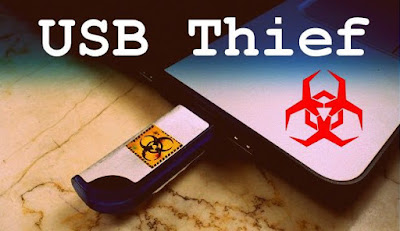USB THIEF
The Researchers at ESET have found
a data - stealing USB Trojan which leaves no trace on the compromised
system. Nicknamed as USB Thief (detected as Win32/PSW.Stealer.NAI
trojan), this is the most complex trojan ever discovered, it uses
encryption and self-protection procedures to infect and hide.
The
trojan binds on the USB stick using the USB drive's details as an
encryption key using AES 128 encryption. If the trojan is copied
to another USB, the encryption breaks and the content cannot be
determined.
The
malware injects itself as a plugin or a dynamically linked library (DLL)
file. When the victim launches the app from an infected USB, the Trojan starts
executing in the background.
As the
malware is executed using a USB device, it does not leave any trace on the
machine.
The
Trojan consists of six files. Four files are executables and the other two
contain the configuration data. To protect it from reverse engineering, it uses
two techniques.
1.
Some files are AES128-encrypted.
2.
Their filenames are generated from some cryptographic elements.
This can
also be packed as some applications on USBs such as Firefox,
Chrome, TrueCrypt, Notepad++ .
The
attacker deliver the Trojan as a plugin or some apps and let the target carry
the Trojan into the air-gapped systems and use it.
When the
app or the plugin is launched, the Trojan is executed.




Comments
Post a Comment